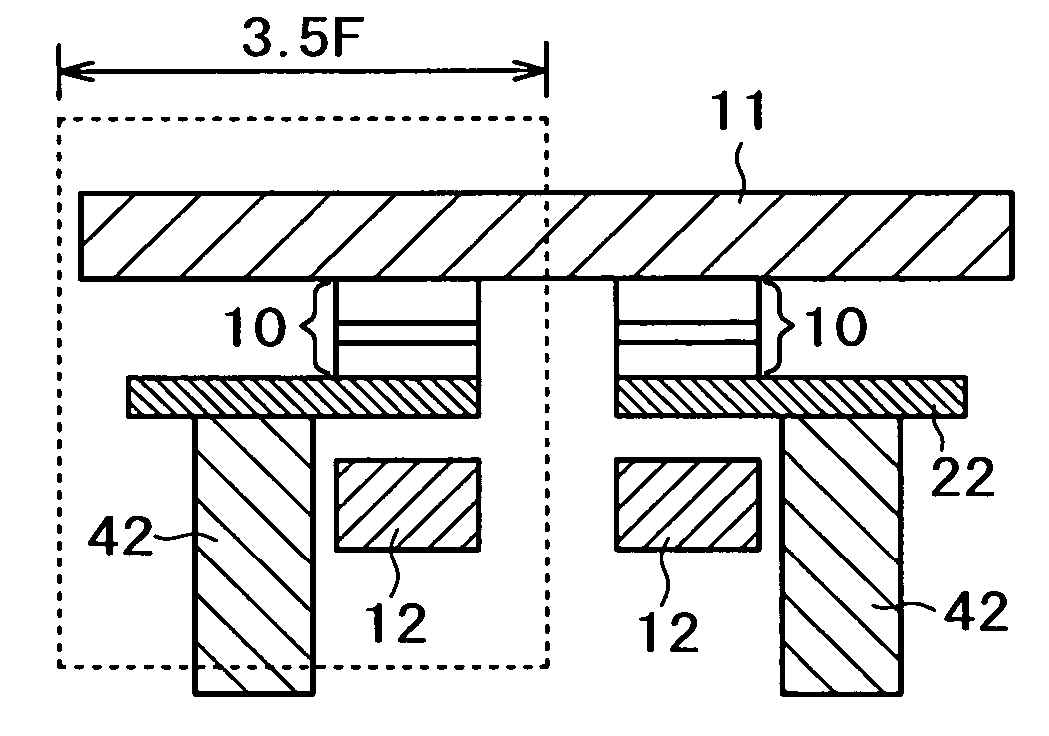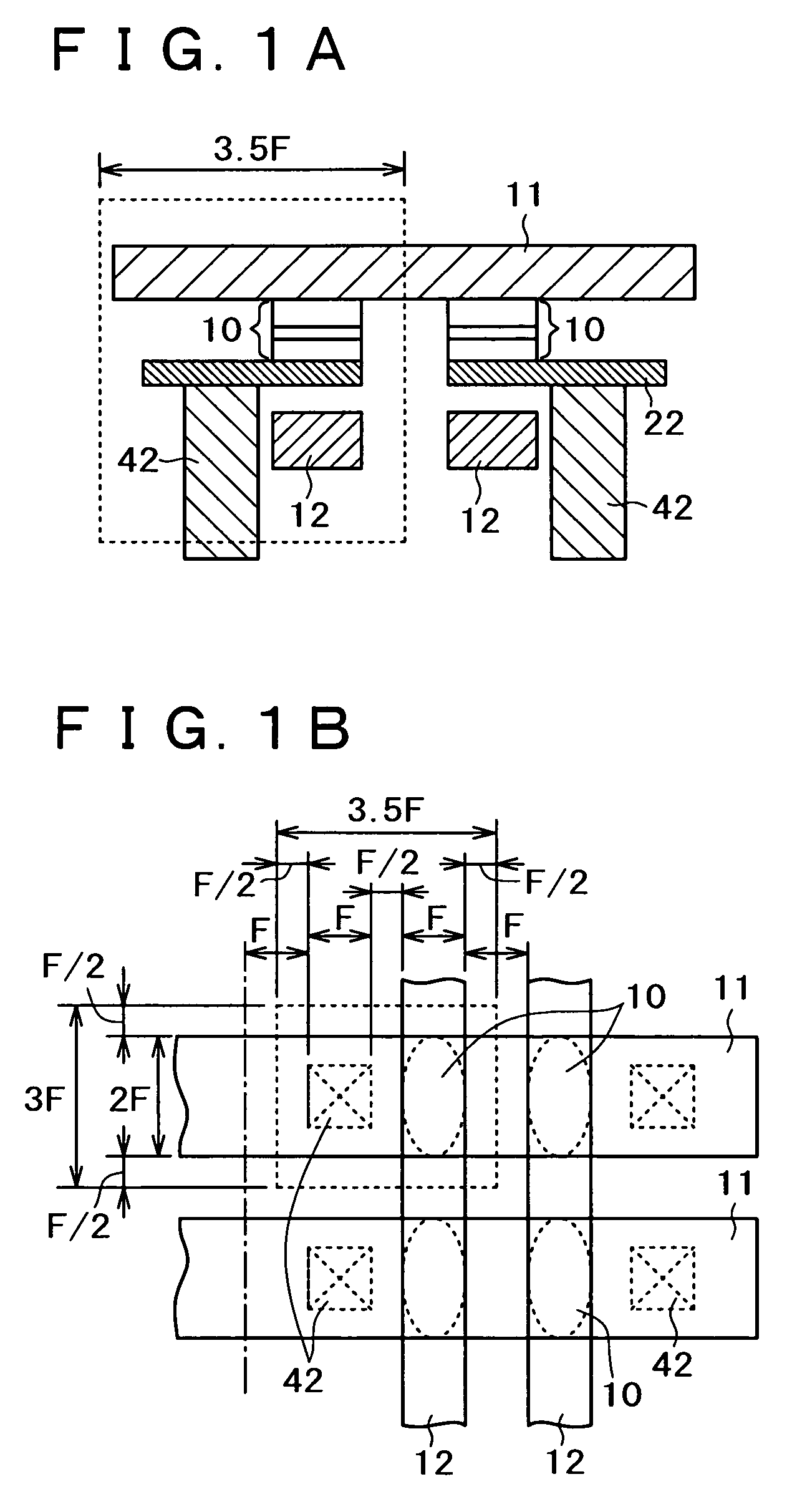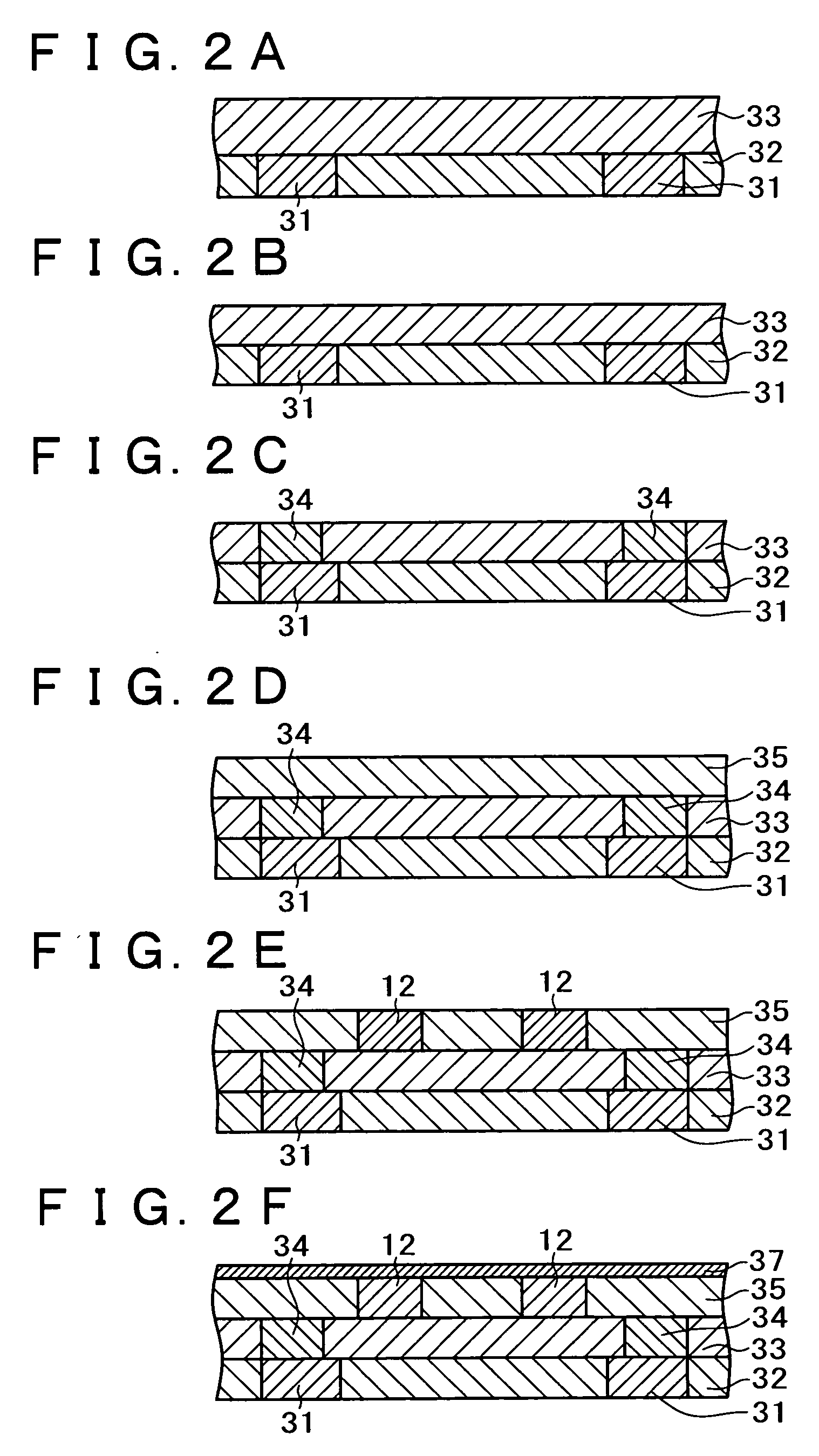Magnetic memory device and method for production thereof
a memory device and magnetic technology, applied in semiconductor devices, digital storage, instruments, etc., can solve the problems of too poor endurance to replace sram (static random access memory) and dram (dynamic), and the space between the connecting hole and the first conducting layer can be reduced, so as to reduce the size of the memory cell containing memory elements
- Summary
- Abstract
- Description
- Claims
- Application Information
AI Technical Summary
Benefits of technology
Problems solved by technology
Method used
Image
Examples
embodiment 1
[0081]FIG. 1A is a schematic diagram showing the structure of the MRAM according to this embodiment. FIG. 1B is a schematic plan view of the MRAM according to this embodiment. As shown in these figures, the MRAM is constructed such that the landing pad does not exist at the same level as the word line 12, and the reading wiring 22 is connected to the lower layer wiring (not shown) through the connecting hole 42. This structure makes it possible to bring the connecting hole 42 closer (by F / 2 ) to the word line 12. In this way it is possible to decrease the size in the direction along the bit line 11 to 3.5F.
embodiment 1-1
[0082] The production process will be described with reference to FIGS. 2 to 4. In these figures, MOS transistors etc. under the lower layer wiring are not shown. The same shall apply to other embodiments that follow.
[0083] On the lower layer wiring 31 (600 nm thick) are sequentially formed the HDP film 32 (800 nm thick) and the P-TEOS film 33 (1200 nm thick), as shown in FIG. 2A. The HDP film is a silicon oxide film formed by high-density plasma CVD. The P-TEOS film is a silicon oxide film formed from plasma tetraethyl orthosilicate by reduced pressure CVD. Then, CMP (chemical mechanical polishing) is performed such that an insulting film (700 nm thick) is left on the lower layer wiring 31, as shown in FIG. 2B.
[0084] A connecting hole (not shown) for electrical connection to the lower layer wiring 31 is formed by lithography and etching. In this hole is deposited a tungsten film by CVD. (This tungsten film is referred to as W-CVD hereinafter.) Finally, CMP is performed. In this w...
embodiment 1-2
[0094] The production process will be described with reference to FIGS. 5 to 7.
[0095] First, a lower layer metal wiring 31 (600 nm) is formed. On this layer are sequentially deposited the HDP film 32 (800 nm thick) and the P-TEOS film 33 (1200 nm thick), as shown in FIG. 5A. CMP is performed such that an insulting film (700 nm thick) is left on the lower layer wiring 31, as shown in FIG. 5B.
[0096] The P-SiN film (50 nm thick) (not shown) and the P-TEOS film 35 (400 nm thick) are sequentially deposited, as shown in FIG. 5C. Etching is performed on the P-TEOS film 35 and the P-SiN film through a photoresist film (not shown) as the mask, so that a wiring groove is formed. In this wiring groove are sequentially deposited Ta / TaN / Cu seed layers by sputtering (not shown). The wiring groove is filled with Cu plating. The surface of the wiring groove is planarized by CMP, and the word line 12 is formed, as shown in FIG. 5D. The P-SiN film 37 (50 nm thick) is deposited, as shown in FIG. 5E....
PUM
 Login to View More
Login to View More Abstract
Description
Claims
Application Information
 Login to View More
Login to View More - R&D
- Intellectual Property
- Life Sciences
- Materials
- Tech Scout
- Unparalleled Data Quality
- Higher Quality Content
- 60% Fewer Hallucinations
Browse by: Latest US Patents, China's latest patents, Technical Efficacy Thesaurus, Application Domain, Technology Topic, Popular Technical Reports.
© 2025 PatSnap. All rights reserved.Legal|Privacy policy|Modern Slavery Act Transparency Statement|Sitemap|About US| Contact US: help@patsnap.com



